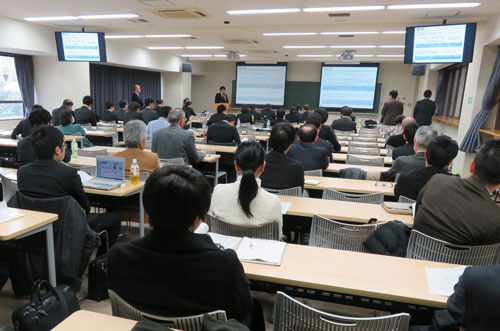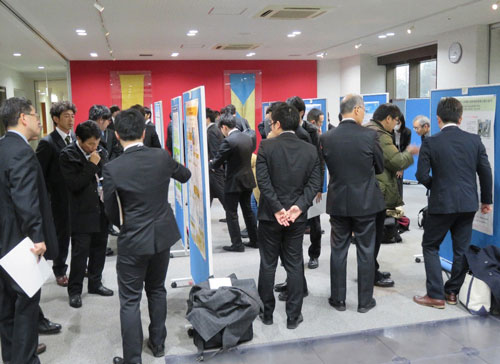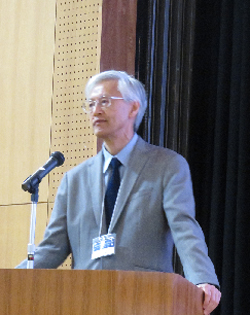News
Presentation Session at Tokyo Institute of Technology on Waste Nuclear Furnace Updated in June 2017
The decommissioning work of Tokyo Electric (TEPCO) Fukushima Daiichi Nuclear Power Plant is a long-term national task. R&D of new technologies, training and securing human resources is extremely important. Under such circumstances, a research-paper presentation session titled “The Next Generation Initiative Furnace Technology Conference” to nurture next-generation researchers and engineers was co-hosted by 9 organizations including the Ministry of Education, Culture, Sports, Science and Technology (MEXT), Japan Science and Technology Agency (JST), Tokyo Institute of Technology and others. It was held on March 7 at Tokyo Institute of Technology’s Ookayama Campus (Meguro-ku, Tokyo).
The 9 co-organizers include include MEXT, JST, Tokyo Institute of Technology, University of Tokyo, Tohoku University, Fukushima University, Fukui University, National Institute of Technology/Fukushima College and the Geotechnical Engineering Society. The event consisted of a keynote lecture, a special lecture and presentations by students, and poster sessions. More than 200 researchers, students, business people, participated in the event.
Presentations by students were divided into seven research fields like “fuel debris treatment/radioactive waste disposal,” “remote technology,” “decommissioning measures of nuclear reactors” and others. There were about 60 presentations by students mainly on remotely operated robot technology and debris disposal methods. Some of the paper titles include: “Robot Fabrication for Waste Furnace Robot Contest” (Fukushima Industrial College of Technology) “Study on Deposition Angle and Criticality of Fuel Debris Dropped during Recovery Work” (Tokyo City University) “Elucidation of Reactor Core Structure Breakage Caused by Severe Accident of Boiling Water Type Light Water Reactors” (Tokyo Institute of Technology)
These researches were all conducted in response to the harsh conditions of Fukushima Daiichi Nuclear Power Plant accident. Some presentations were from universities and colleges not included in the 9 organizers. At each venue, visitors from Japan Atomic Energy Agency (JAEA) and corporate researchers were listening intently to each student’s presentation.
There were more than 30 presentations in the poster session, and students enthusiastically asked questions to each other. In the evening, a special lecture was given by Director Toru Ogawa of JAEA’s International Collaborative Research Center for Decommissioning.
In this lecture titled “Basic Research Fund for Decommissioning,” Director Ogawa commented as follows: “The situation of the reactor is still unknown, and the decommissioning work becomes a long and difficult process. Effective collaboration between basic research and decommissioning work project is necessary to deal with this problem. We must deliver cutting-edge tools through R&D to the site of the decommissioning plant while managing risks.”
According to TEPCO officials, at Fukushima Daiichi Nuclear Power Plant Unit 2 Reactor, the company started a full-scale investigation to grasp actual conditions of the melting debris late in February. A preliminary survey was held late January. By placing a scorpion shaped self-propelled robot equipped with camera and dosimeter inside the reactor containment vessel, it revealed that the space radiation dose in the furnace is 210 sievert per hour, but the robot could not get to the bottom of the vessel. TEPCO is aiming to extract the debris by 2021, but there are many technical problems and it is unclear as to how long it will take for the decommissioning work to complete. Under such circumstances, it is considered indispensable to train next generation experts who could be responsible for the waste furnace work.

Photos courtesy of Japan Science and Technology Agency

Photos courtesy of Japan Science and Technology Agency

Photos courtesy of Japan Science and Technology Agency







